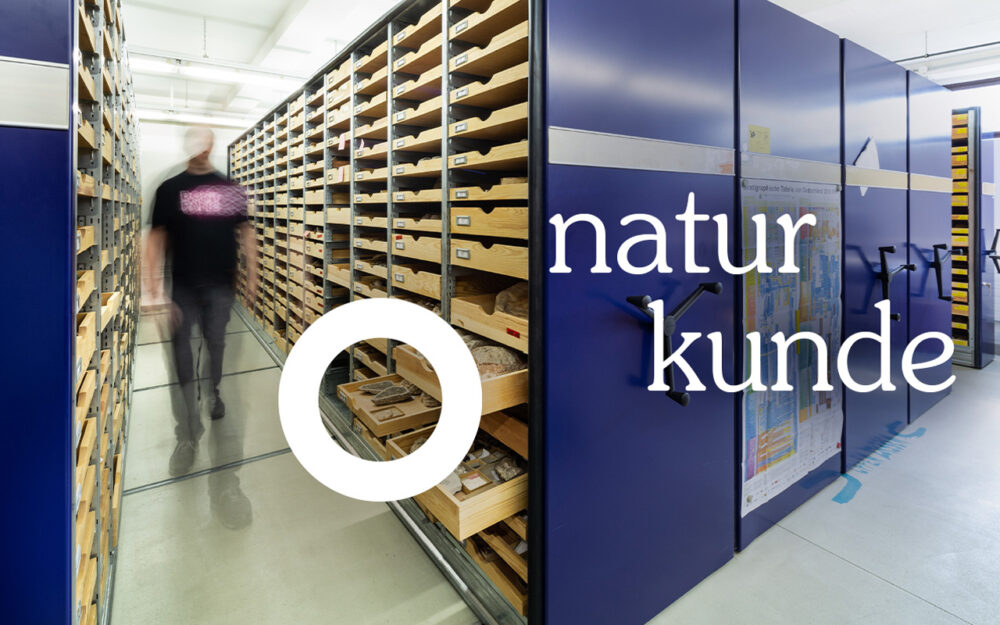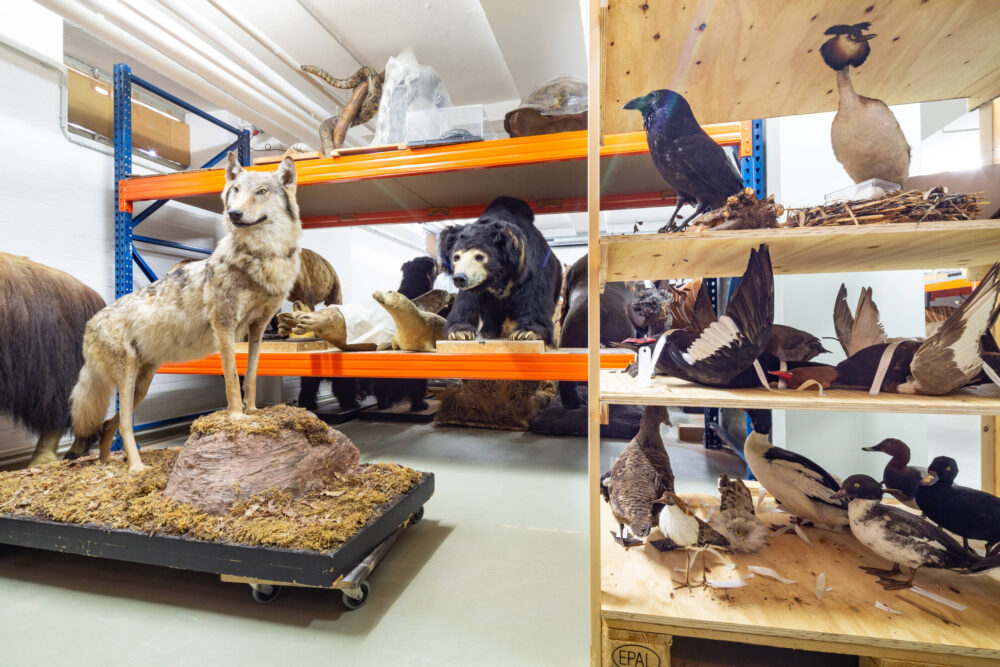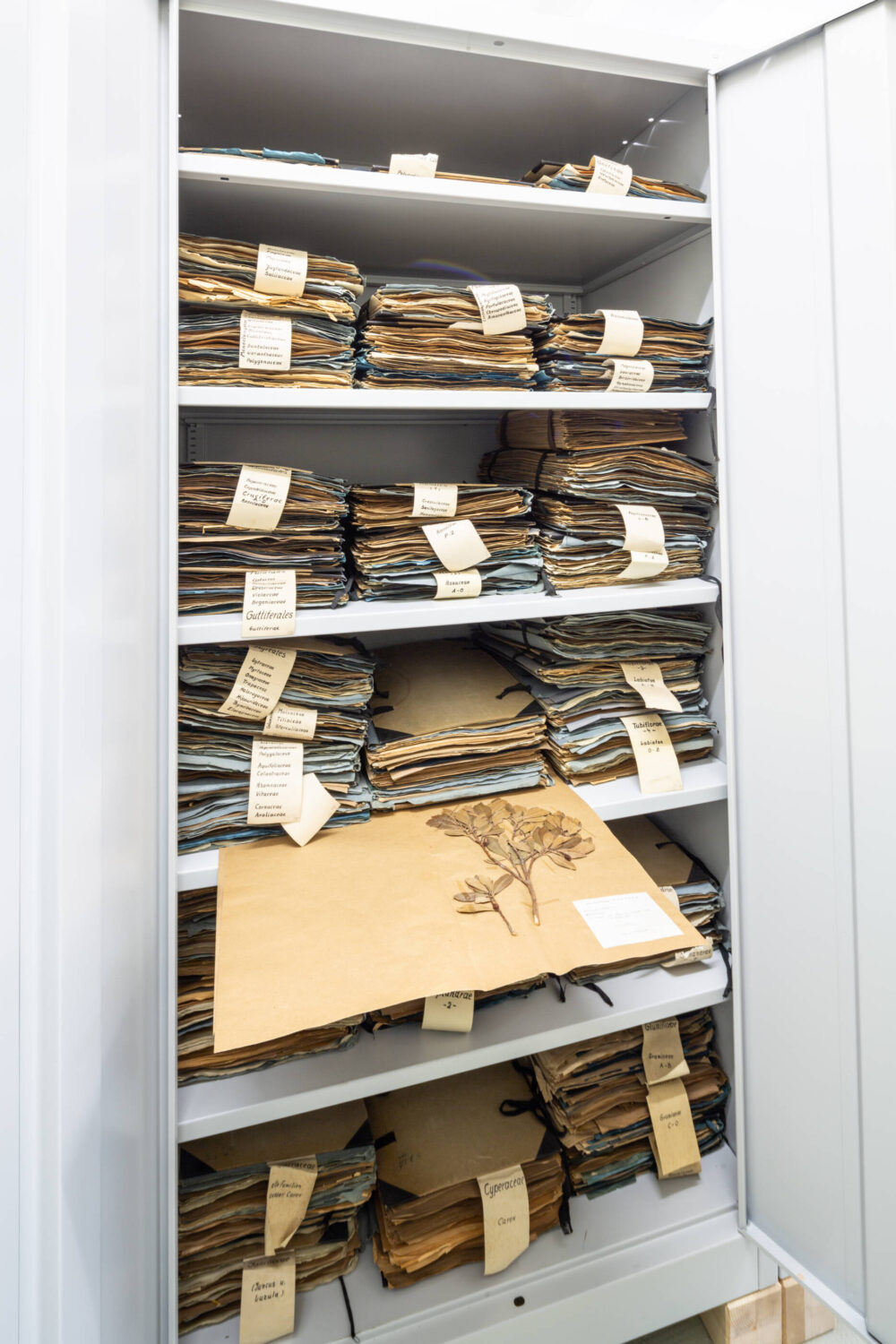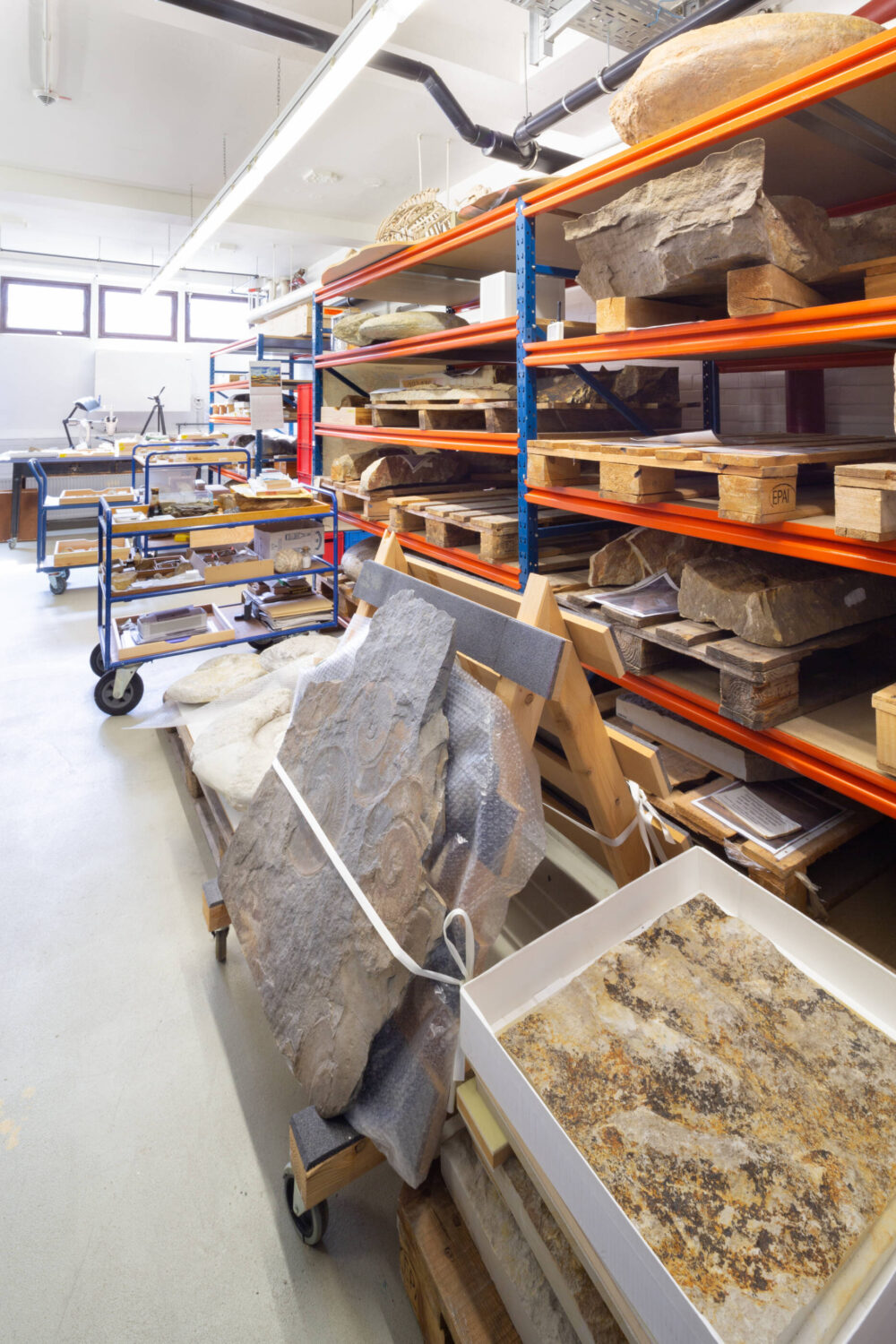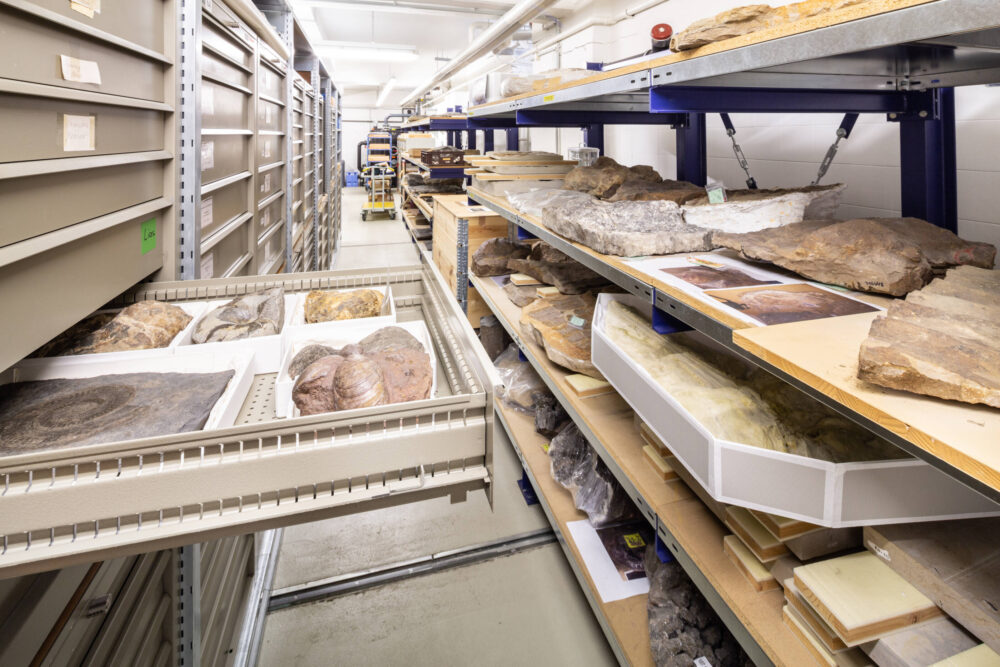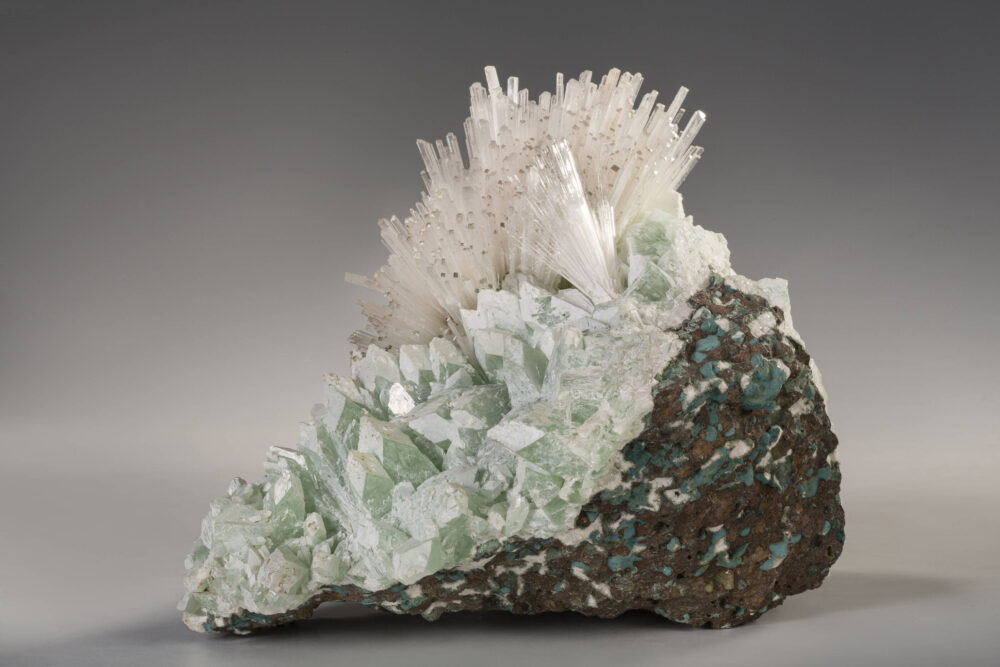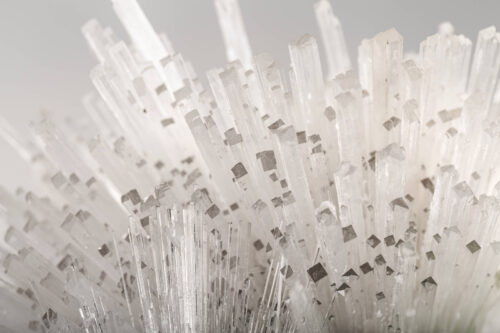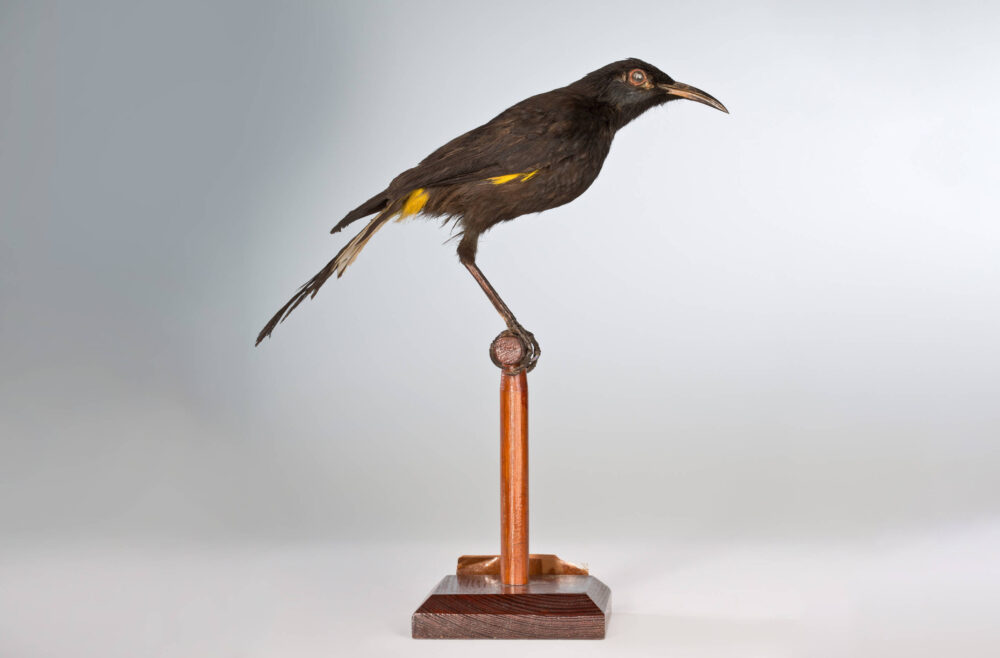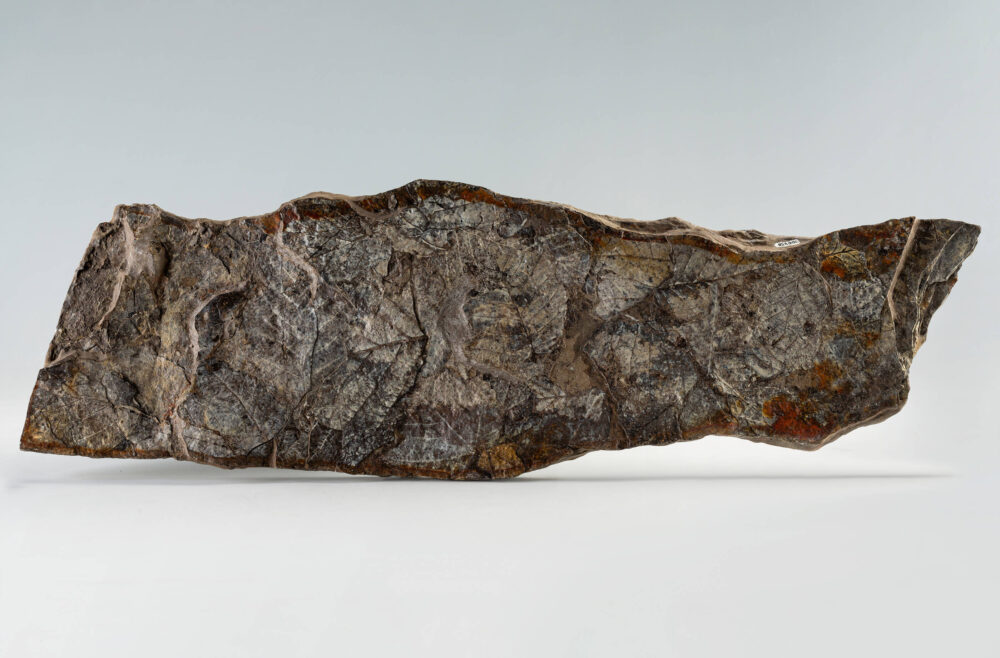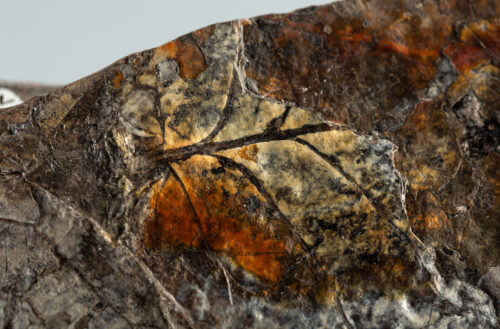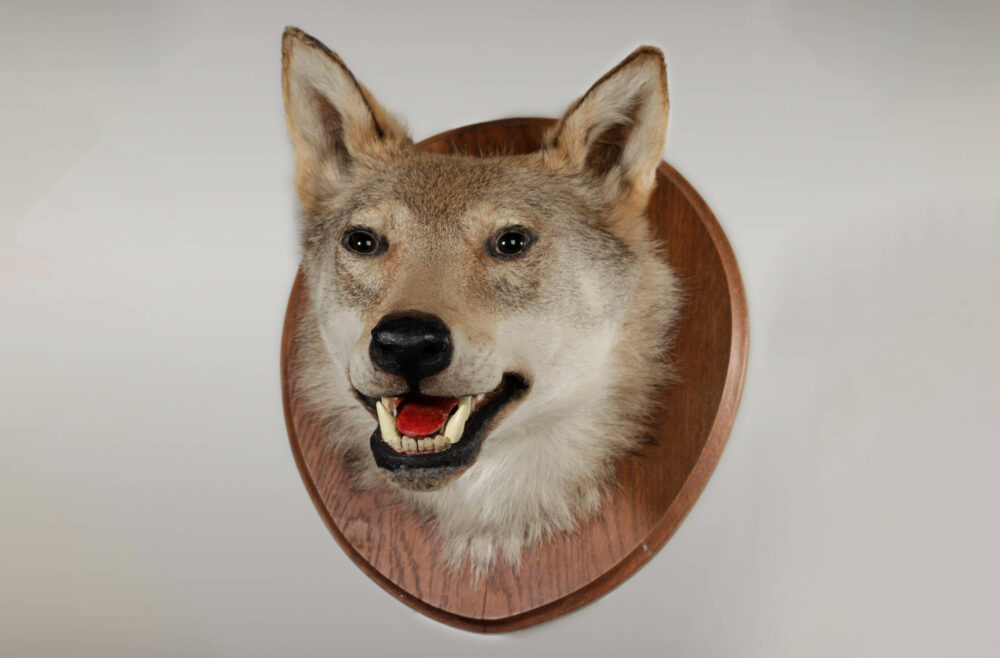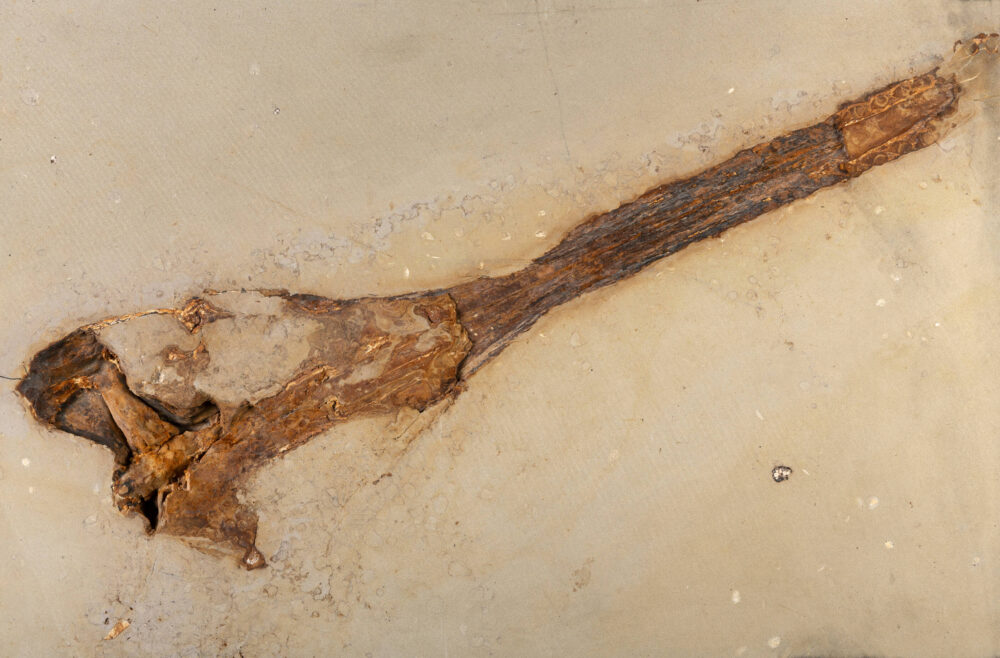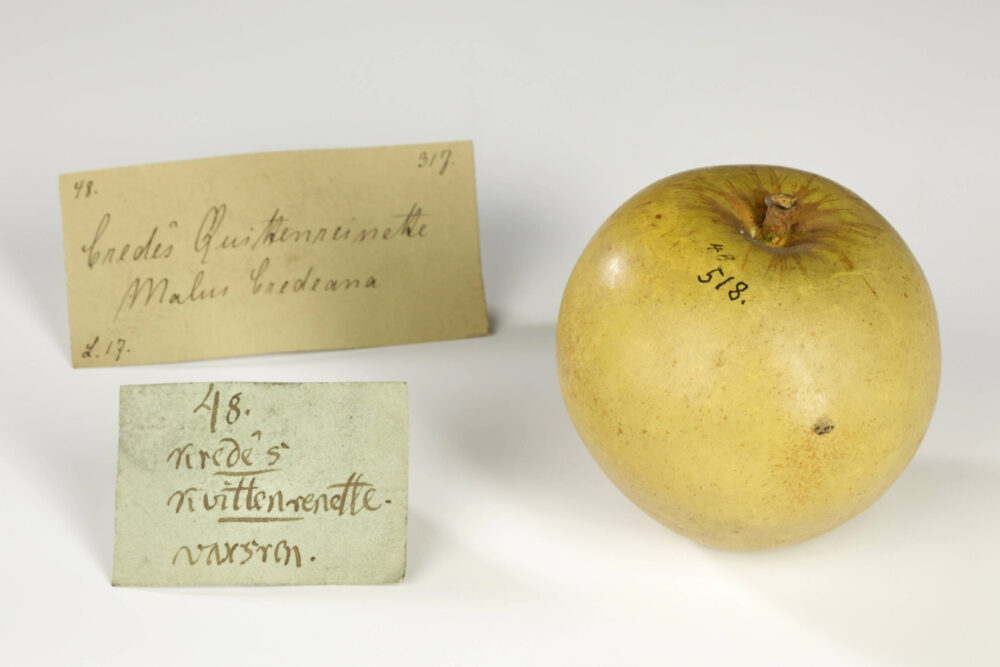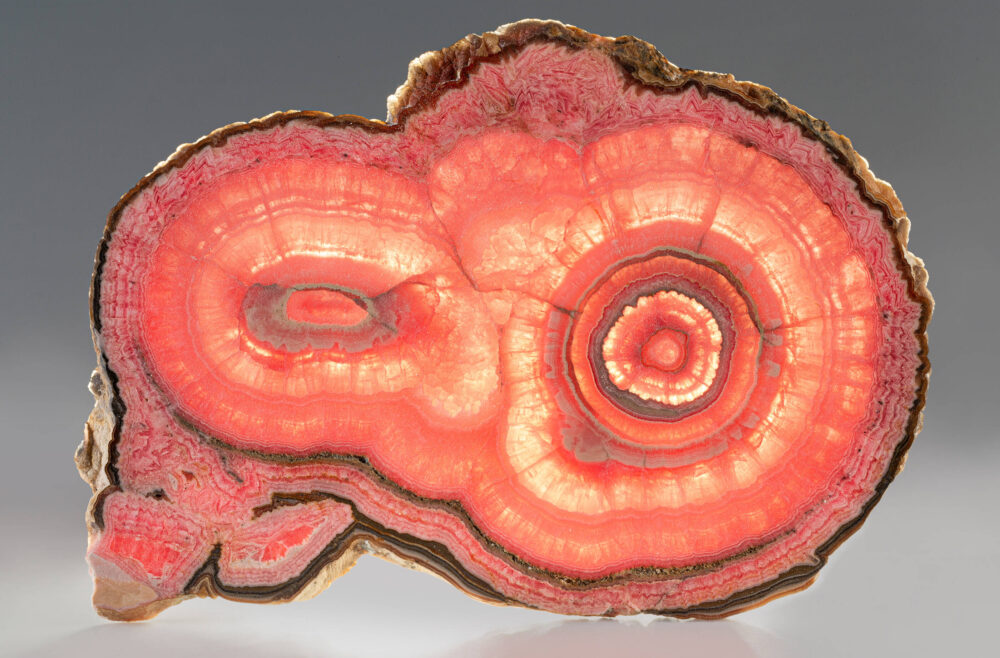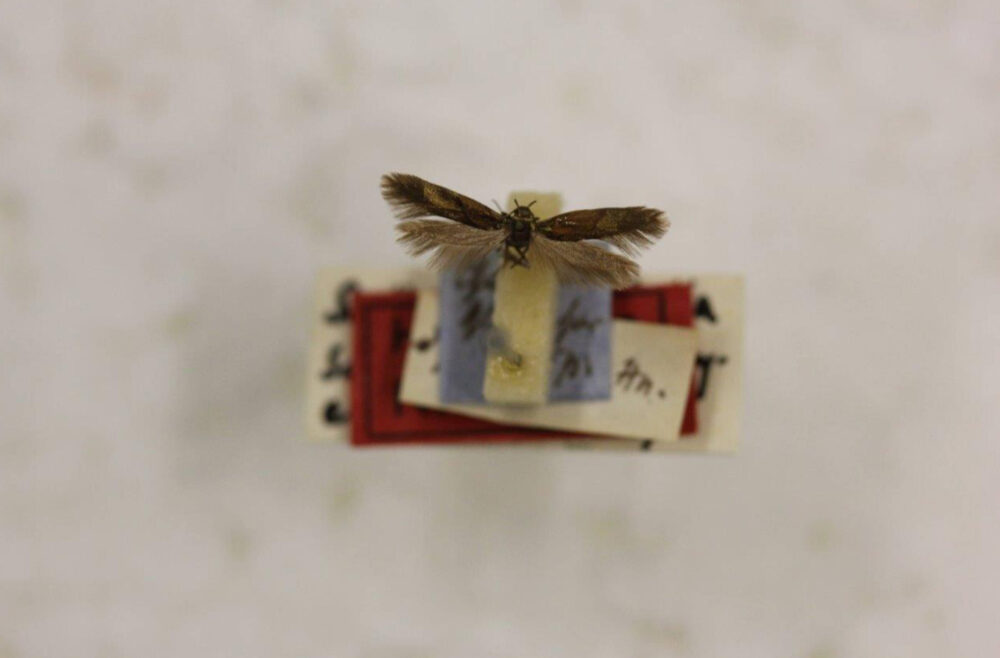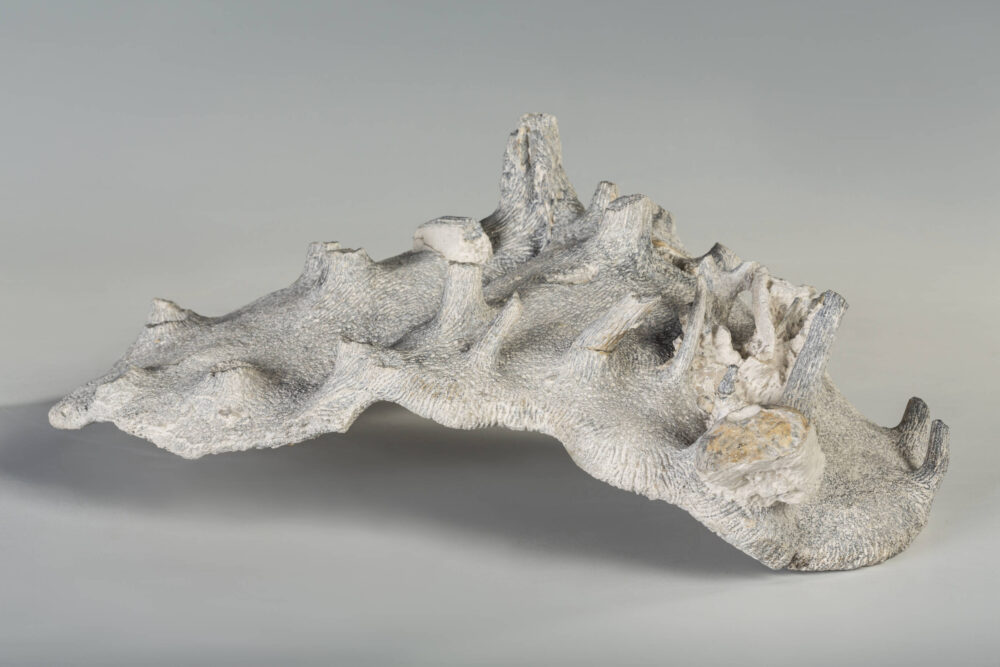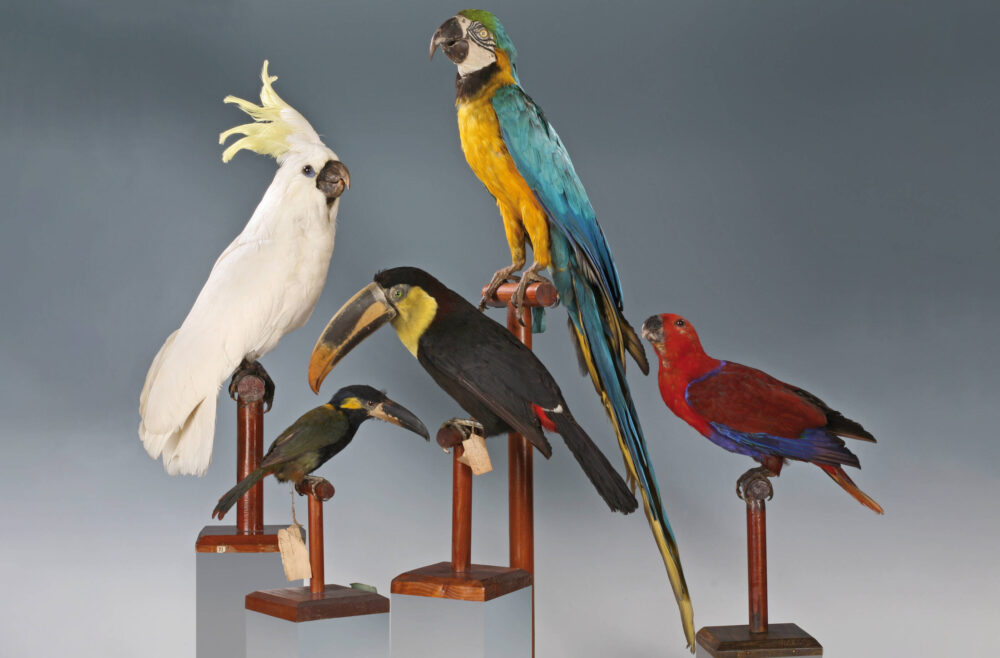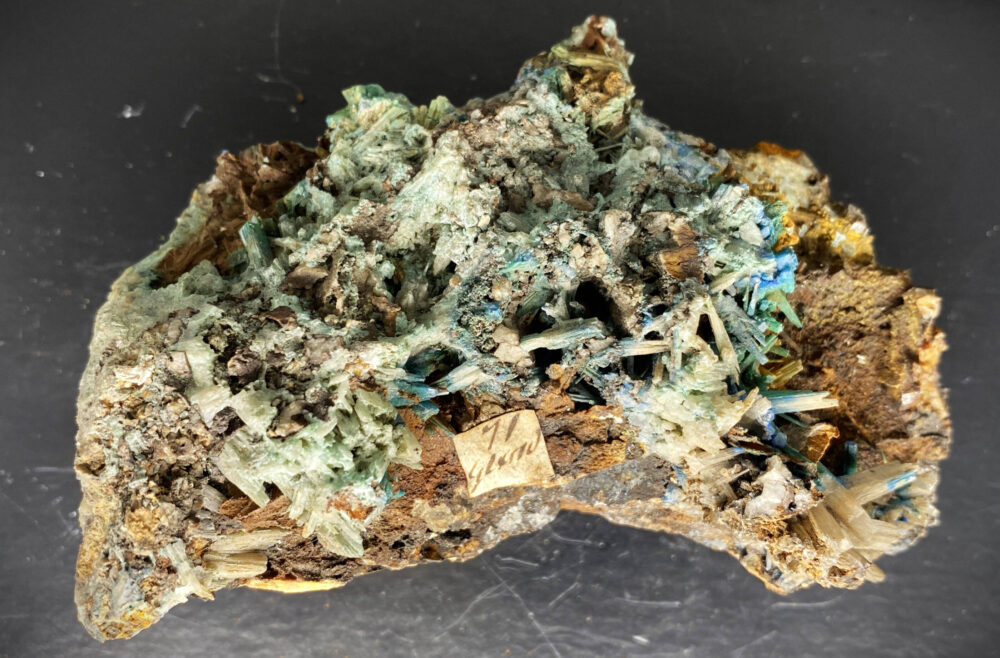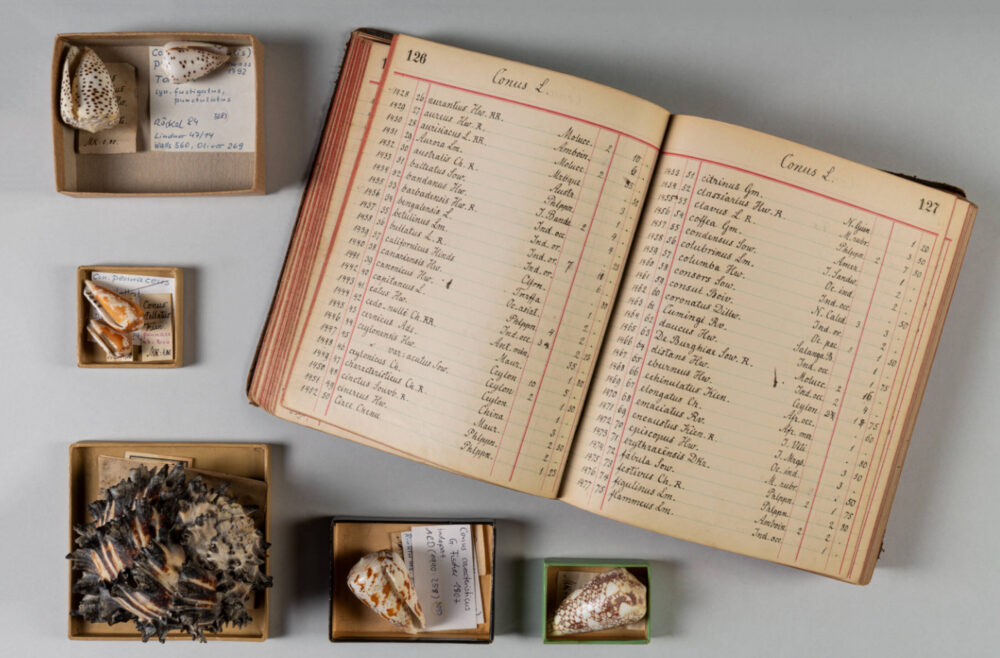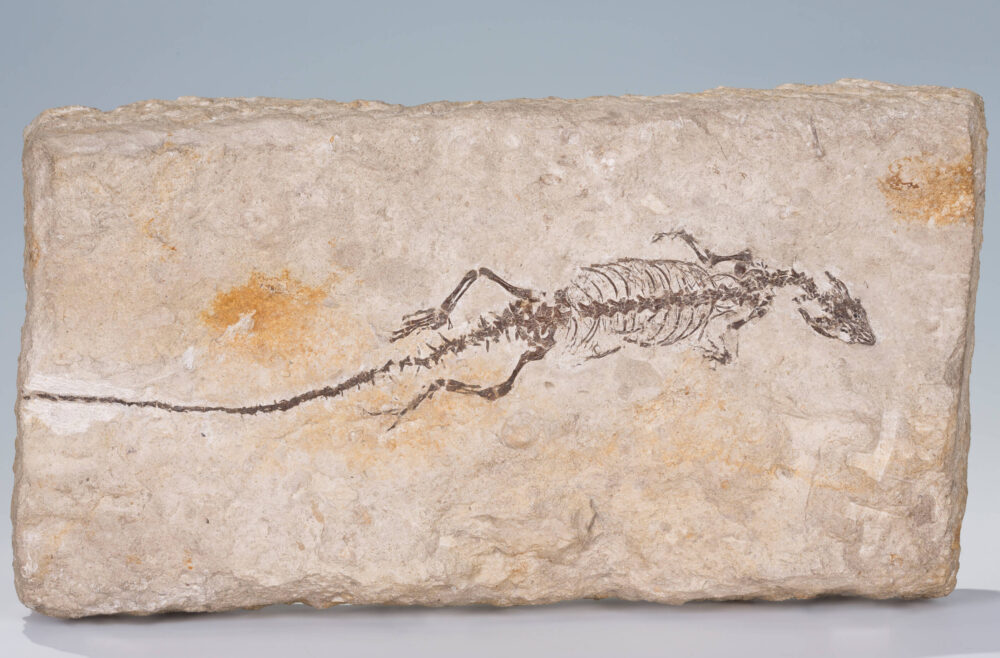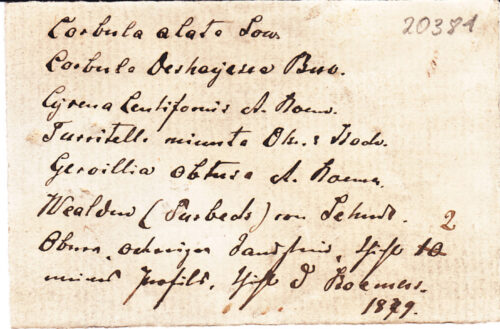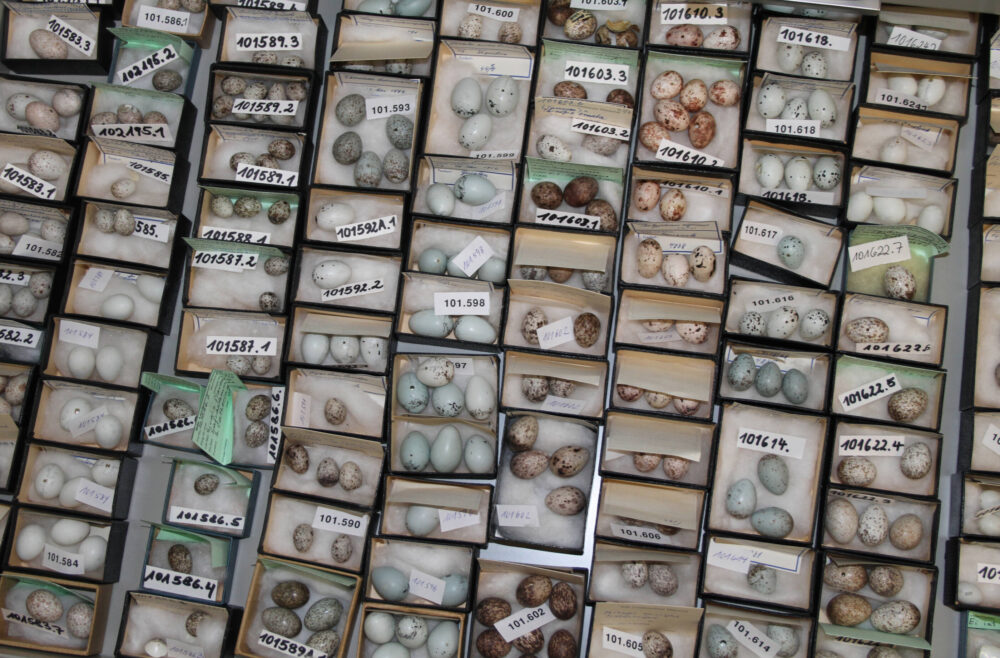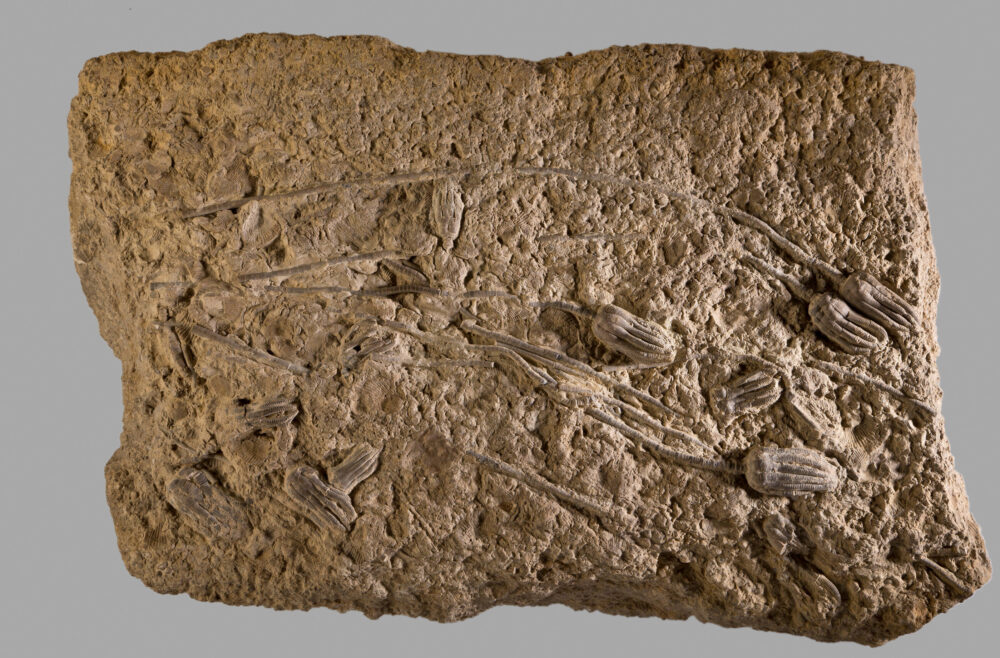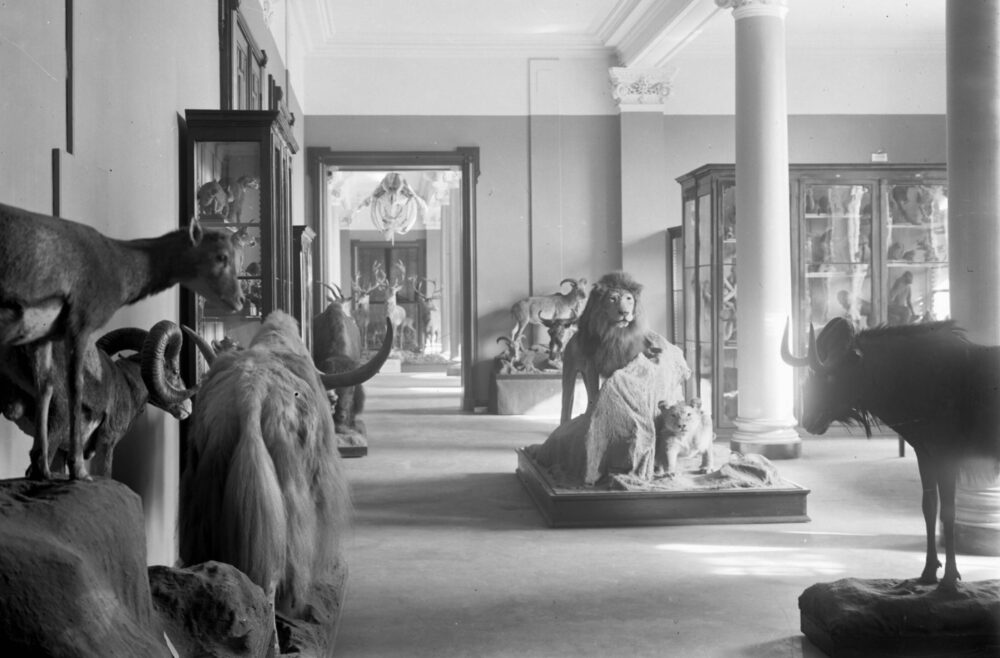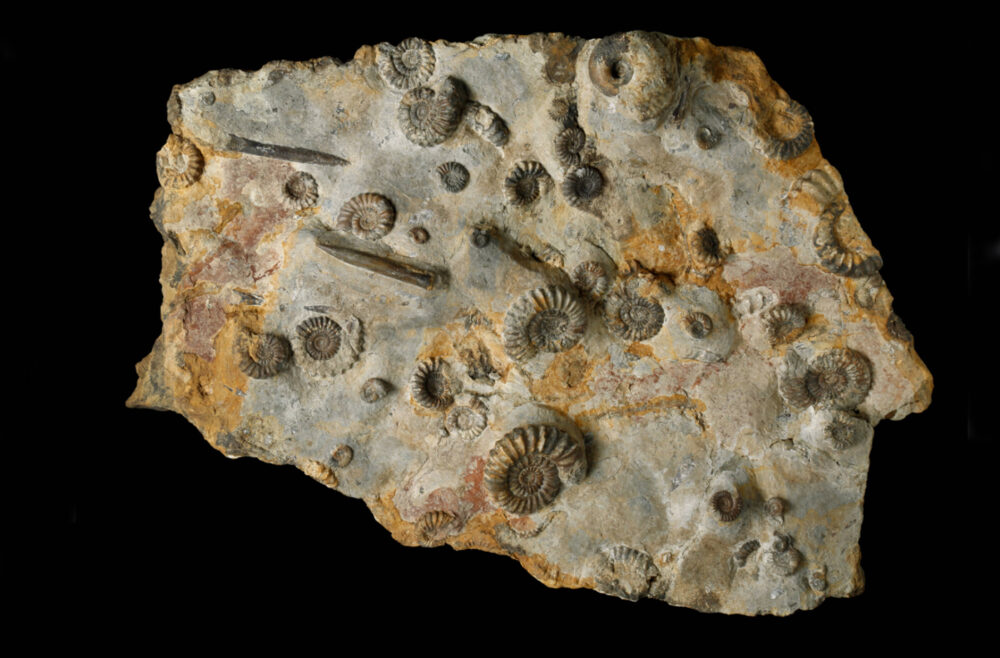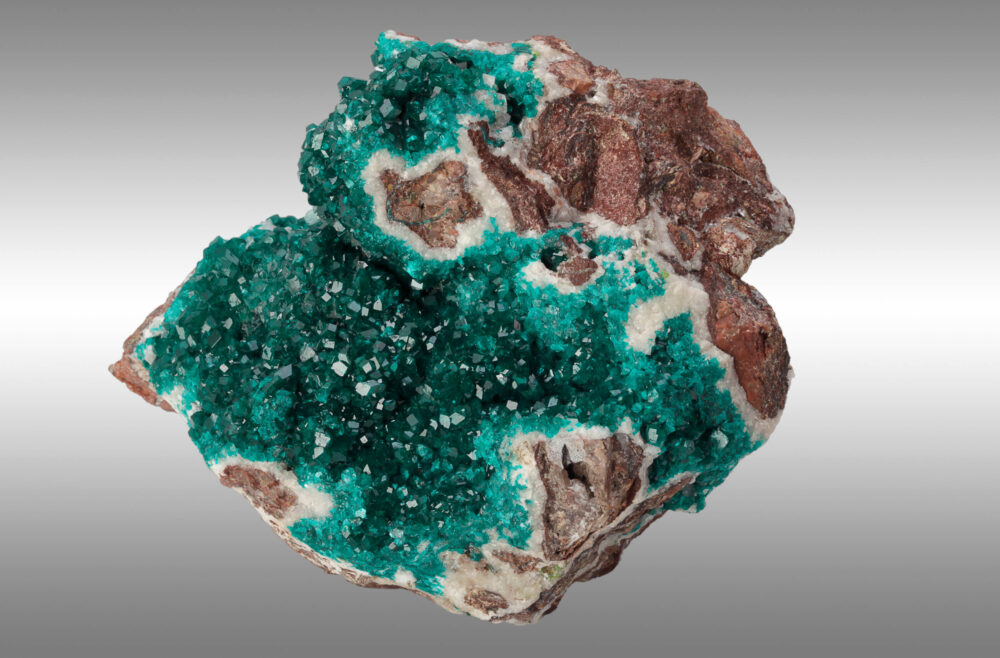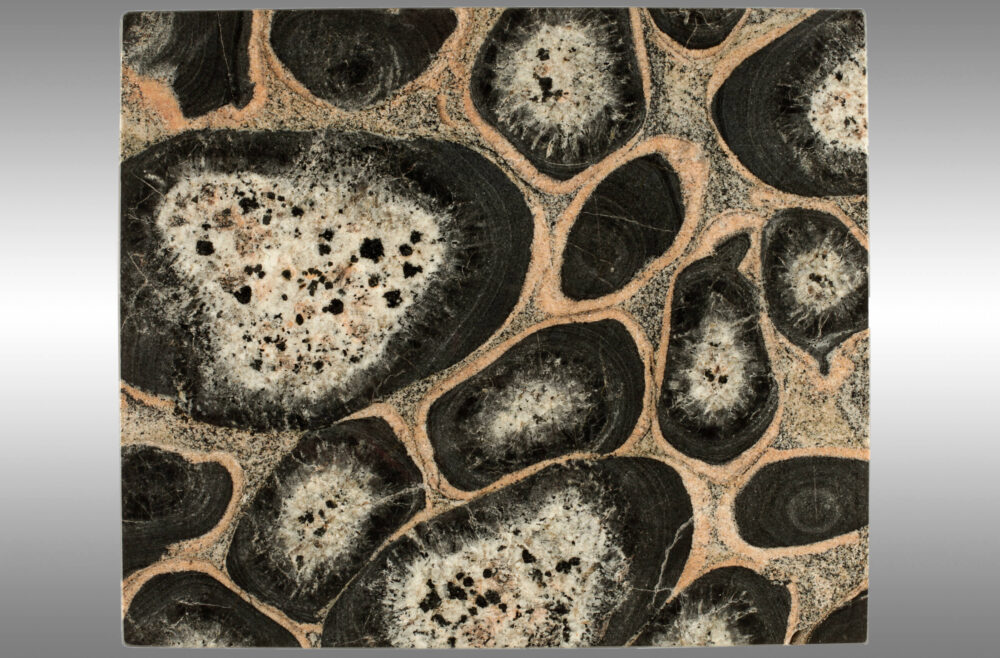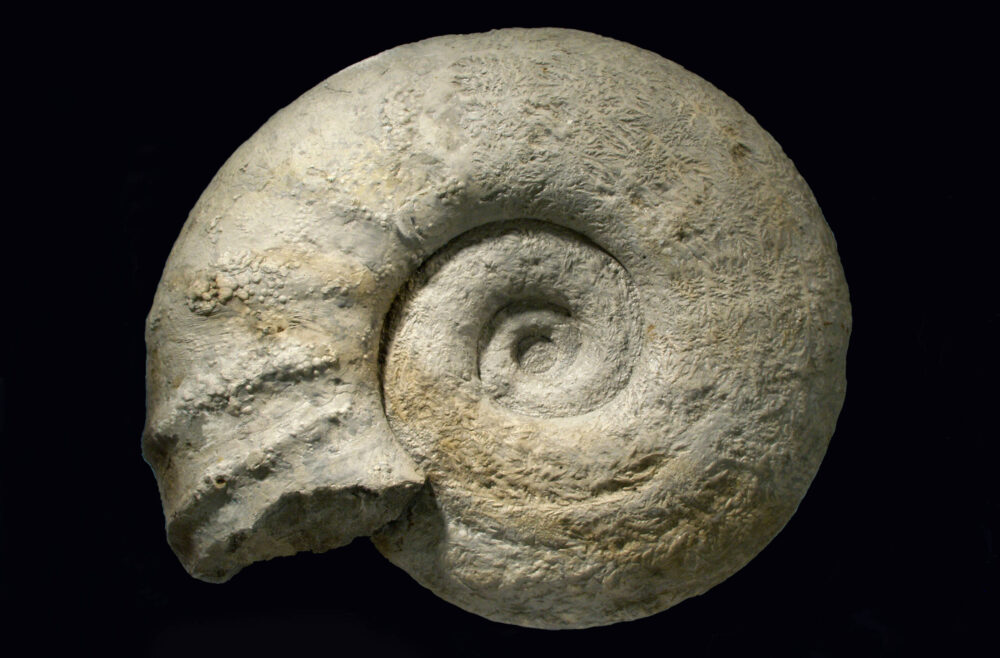Collection focus
Fossils
The local focus of the fossil collection is on Lower Saxony and the Hanover region. Numerous finds come from the quarries on the western edge of Hanover, the Leinetal gravel pits in Hemmingen and Koldingen, a Sarstedt gravel pit and the important marl pits (Upper Cretaceous) on the eastern edge of Hanover. The Harz and the Muschelkalk of the Elm are other important sites. The largest group of fossils preserved are ammonites and belemites as well as many Jurassic invertebrates (snails and mussels), but especially the recently added Upper Cretaceous sponges and sea urchins. There are also some vertebrate remains, the highlights of which undoubtedly include a very well-preserved ichthyosaur and various swimming dinosaurs. Further highlights are the numerous Lower Cretaceous dinosaur track plates and a generally extremely diverse collection of almost all important invertebrate groups from the local Upper and Lower Cretaceous of Hanover. The majority of the collected fossils come from the Jurassic and Cretaceous eras. In addition, there is the Triassic (especially limestone) and a local, but quite large, vertebrate fauna from the Pleistocene (Ice Age) south of Hanover. This goes back to the early Middle Ages.
Minerals and rocks
When it comes to minerals and rocks, the regional focus is more on the historical collections, which are primarily dedicated to the Harz and its mining. These are primarily typical ore minerals associated with silver mining and iron smelting. Since the 20th century, outstanding pieces have also been found from the rest of Germany and the whole world, from Saxony and the Rhineland (fluorite, baryte) to Namibia (copper minerals from Tsumeb), Brazil (the entire range of amethysts, agates & Co. from Minas Gerais) or India (outstanding flood basalt minerals from Poona) to Australia (opals) and a worldwide calcite collection.
Important collectors
The Oberbergrat Baron Carl Georg Christian Grote
...the NGH donated one of the most valuable collections in 1865, which also marked the beginning of collecting: The important mineral collection, comprising around 2.500 specimens, comes predominantly from the Harz region and includes some very rare parageneses
The agricultural assessor Carl Eberhard Friedrich Struckmann
...collected in the quarries on the western edge of Hanover in the second half of the 19th century, thereby laying the foundation for one of the most important Upper Jurassic collections in northwest Germany. It mainly includes the coral oolite and the Kimmeridgian from today completely urbanized areas. Struckmann also led excavation campaigns in the Harz “Unicorn Cave,” where he recovered many Ice Age mammal bones, especially from cave bears.
The civil engineer and geologist Wilhelm Hoyer
...was collecting around the same time as Struckmann, primarily on the western edge of Hanover, but also around Hildesheim and in the Leinebergland. His collection, which comprises around 5.000 pieces, is characterized above all by its stratigraphic accuracy through horizontal collecting and includes numerous ammonites and belemnites as well as other invertebrates from the North German Jurassic strata, as well as some vertebrate remains (including ichthyosaurs).
The textile dealer Otto Klages
...was a universalist: His collection, compiled in the mid/late 20th century and comprising over 10.000 objects, includes fossils, minerals and rocks from Germany and all over the world. His widow sold part of the collection to our house, the other larger collection is in Königslutter. Klages' main focus of collecting was the shell limestone of the Elm, with large quantities of crinoids and various ceratites, some of which he exchanged with other international collectors for their local highlights!
The private collector Kurt Wiedenroth
…sold the museum a large special collection of Jurassic ammonites prepared by himself at the end of the 20th century. The museum also owes him two swimming dinosaurs: a rhomaleosaurid swimming dinosaur from Lyme Regis (UK) was donated by him, and another swimming dinosaur from Sarstedt that he recovered came to the museum as a permanent loan from the Federal Institute for Geosciences and Natural Resources.
The Rut and Klaus Bahlsen Foundation
Some particularly large and beautiful mineral specimens of international origin (purchases) come from Klaus Bahlsen's former private collection (also 20th century) and, like some fossils, were distributed to various institutions after his death.
Werner Pockrandt
...founded the Hanover collecting group “Hannover Paleontology Working Group”, collected in the Hanover region and focused on both the marine Lower and Upper Cretaceous. He donated his collection to the Institute for Geology and Paleontology at what is now Leibniz University, which later had to hand over a partial collection of around 1.200 pieces to the Hanover State Museum due to space constraints. The exact stratigraphic documentation of Pockrandt's sometimes very small, delicate invertebrate fossils from the second half of the 20th century is outstanding.
Dr. Brigitte Perner
...was actually a full-time botanist and also a deserving, long-standing volunteer at our company. She donated the rocks (1980s and 90s) and minerals (2000s) that she had collected on a number of international trips and, for the most part, personally ensured that the data was very accurate as far as origins and paragenesis were concerned. Her pieces, many of them from Namibia, South Africa and Russia, represent a perfectly fitting addition to older focuses and include many mineralogical and petrological “highlights”.
Wolfgang Weidehaus
...has donated large quantities of Pleistocene to early medieval mammal bones from the Leinetal gravel pits in Hemmingen and Koldingen since the mid-1990s and until 2020. Due to the amount of material he collected, some of it could be arranged comparatively and anatomically. This complements the individual finds from Hanover subway construction sites from the previous decades. In addition, Mr. Weidehaus also donated fossils from the local Upper Cretaceous for this important focus and other fossil material, some of which he had obtained in exchange.
Ferdinand Wesling Sr.
At the beginning of the 2000s, the operator of the Lower Cretaceous quarry next to the Dinopark Münchehagen donated large quantities of original dinosaur track sandstone slabs from the terrestrial Lower Cretaceous (Berriaisian), partly to the University of Göttingen, but mostly to the Hanover State Museum; These include very well-preserved, deep iguanodont tracks.
Klaus Köster
The long-time operator of the Obernkirchen sandstone quarries on the Bückeberg in the Schaumburger Land donated, in addition to unusual dinosaur track plates made from the local Lower Cretaceous sandstone (Berriasian), also many other valuable fossils in the partially filled cavity preservation that is typical there, including, above all, detailed crocodile remains and turtle shells large fossil tree trunks.
Anna Margarete and Wolfgang Lembcke
...donated their collection, which consisted primarily of purchased minerals, which also included a large piece of meteorite. All minerals are very aesthetic and extremely suitable for exhibitions due to their high show value; However, for many of them there is inaccurate location information.
Klaus Dziuba
...was a doctor who was enthusiastic about minerals. His valuable mineral collection came to the museum in the 2010s through the foundation of his son Martin Dziuba. It does not consist of material that we collected ourselves, but rather purchased at mineral exchanges and trade fairs, which is reflected in the high quality of the crystals and mineral specimens, some of which are large. Gaps in previously hardly represented mineral groups were closed, for example through Indian mineral associations from Poona (Pune).
Dr. Franz-Jürgen Harms
...donated his large fossil collection in the late 2010s. In many cases, their taxonomic classification still has to be carried out, but the precise documentation of the location and horizon (plus maps) by the former professional geologist and head of the Senckenberg research station Grube Messel is unique. In addition to ichthyosaur remains from the Lower Cretaceous (Garbsen), there are already processed invertebrate fossils from the domestic Oligocene, but also paleobotanical material from Iceland and from one of the founder's former research areas in the Caribbean.
Rainer Amme
...has donated large, extremely wide-ranging collections to the Hanover State Museum since 2017 and to this day, including various fossil finds from a Sarstedt gravel pit ("once through the entire history of the earth") and Pleistocene vertebrate bones. Above all, his very extensive special collection on the marine Upper Cretaceous of the eastern edge of Hanover (marl pits) deserves a special mention, as it represents a very large spectrum of fauna from the Campanian and is thus finally manifested as an important regional collecting focus. There were also dinosaur eggs, marine Lower Cretaceous fossils, and much more.

